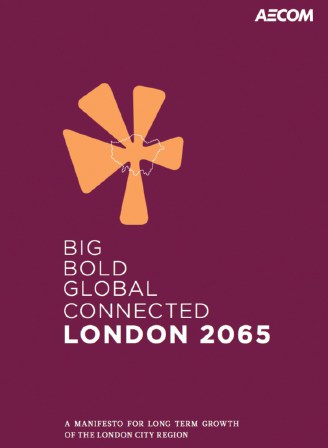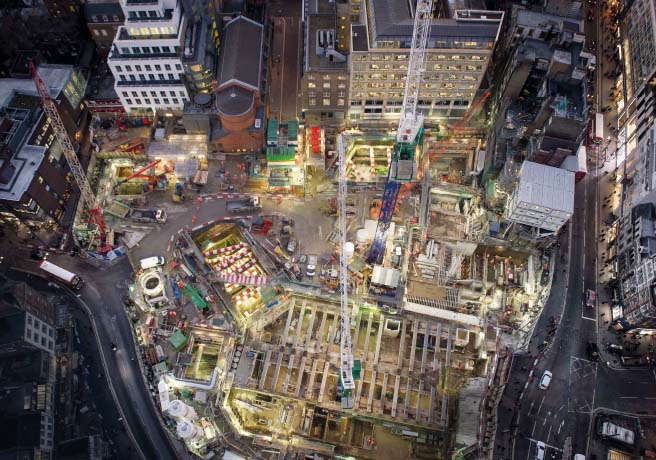The next big thing
Global cities like London are constantly evolving. Balancing population and economic growth with limited land and resource, the city and its surrounding region need to constantly innovate to remain an open, accessible and attractive place to live and do business says Andrew Jones, AECOM’s Cities program director in London
Like every major city, London is facing a familiar set of challenges. These include a lack of affordable housing, transportation systems at full capacity, stretched services in education and healthcare, the need to generate more jobs and areas of poor air quality. Much work is under way to address these needs, but it’s clear that to effect major change major projects are required.
History shows that it’s always been like this in London. Big interventions have always helped the city take a big step forward whether it’s the Great Fire of London prompting the introduction of safer construction methods, or the advent of the railways to accommodate population growth in the suburbs.
Today, London is anticipating considerable population growth. It’s clear that this will need to be accommodated by reinventing parts of the urban center including former industrial land where new infrastructure will be the focus of transit-oriented development. But to deliver urgently needed infrastructure and amenities, the scale of intervention needs to be ambitious and it needs to reach beyond the existing metro area. After all, the capital attracts commuters from the surrounding counties already.
AECOM has proposed that to respond to the challenges, London should be seen as a city region — comparable in scale with global megacity competitors, and plans for the future must encompass this wider area. Currently with a population of around 20 million, the city region could grow to 30 million by 2065. To accommodate this rise in population, a new and more collaborative approach is needed for all those involved with planning, governance and the delivery infrastructure and other development if London is to really step up to the next challenges.
Delivering the Olympic legacy
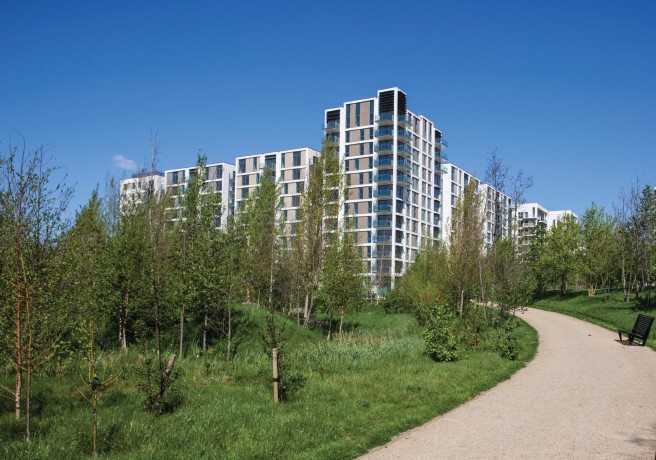
One of the strategic projects defining the new London is the Olympic Park – a major brownfield regeneration project, designed for the 2012 Olympic and Paralympic Games but also with the future vision of the place, the legacy.
Today, the new open green space, now called the Queen Elizabeth Olympic Park, attracts thousands every day, the venues including the London Aquatics Centre and the velodrome, renamed the Lee Valley VeloPark, have hordes of enthusiastic users, and the renamed London Stadium is now home to West Ham United Football Club and is the National Competition Centre for athletics in the UK. Also part of the legacy are fast transport connections to and from London, plus the construction of around 10,000 new homes being built at the site. AECOM created the masterplans for the Olympic Park and its legacy which have helped stimulate the regeneration of East London.
A high-profile development in progress, the Olympic Quarter academic and cultural districts will be home to University College London, a new Victoria & Albert Museum and Sadler’s Wells Ballet. Continuing more than a decade of involvement, AECOM is supporting the mayor’s London Legacy Development Corporation with planning, environmental and transportation advice.
To deliver urgently needed Infrastructure and amenities, the scale of intervention needs to be ambitious
Andrew Jones, Cities program director in London
New regional rail network
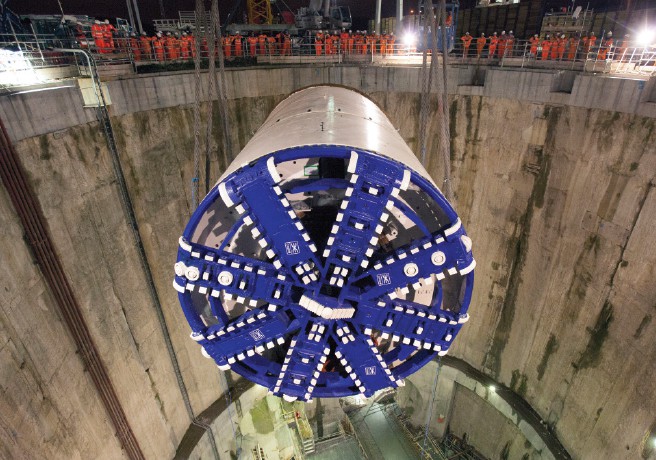
Due to open May 2017, Crossrail — to be called the Elizabeth Line — will transform transport across London opening up new districts for development and economic growth. Running west to east under the city, Crossrail is Europe’s largest construction project. With excavations started in 2009, it covers over 62 miles (100 kilometers) passing through 38 stations. Crossrail will deliver an additional 1.5 million people to within 45 minutes of central London. Selected as program partner in 2009, the Transcend joint venture comprises AECOM, CH2M Hill and The Nichols Group. The consortium is providing strategic management services to help Crossrail deliver the facility on time, within budget and to the highest standards.
London is already looking to the future, the mayor’s team is planning the Crossrail 2 line, to connect the north and south west of London, adding capacity and opening up opportunities for hundreds of thousands of new homes. AECOM is working with Transport for London on the feasibility, business case and design of this line.
Thames Tideway Tunnel

The Thames Tideway Tunnel is helping to modernise London’s Victorian wastewater infrastructure and is set to be the biggest infrastructure project undertaken by the UK water industry. The entire 25 kilometre (15.5 mile) sewer tunnel follows the route of the River Thames and will be built under existing underground infrastructure, in close proximity to tube lines and utilities. AECOM is delivering design services for the 12 kilometre (7.5 mile) central section of the tunnel and brings its experience of other major underground infrastructure projects in London such as its work on the central underground section of Crossrail.
Transit-oriented developments
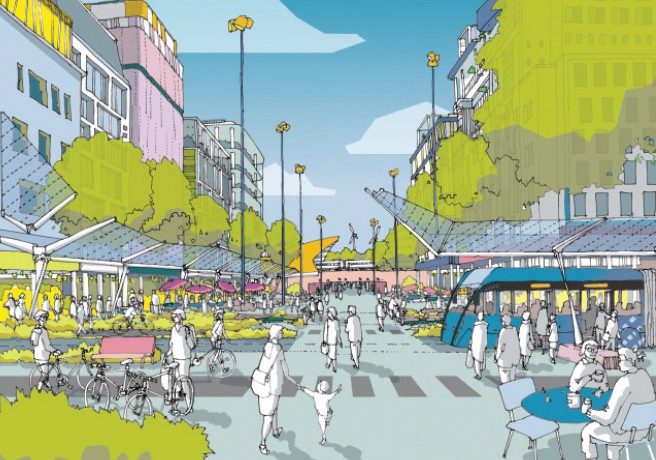
A focus for the new London mayor is to open up underused land for housing in dozens of opportunity areas in the capital particularly around transport hubs. Two big projects are under way.
Old Oak Common is a large-scale rail depot only three miles from central London. With Crossrail, a planned high speed 2 station and access to three tube lines, yet only 10 minutes from Heathrow Airport, this is London’s next big transformational development project. AECOM is working with the mayor’s Old Oak and Park Royal Development Corporation to assess future infrastructure and water management requirements. A ‘smart city’ strategy is also in development to ensure Old Oak is a progressive 21st century new quarter for the capital.
Only 18 minutes from central London by high speed rail (the London to Paris line), Ebbsfleet Garden City is in development. The first of the next generation of planned communities around London, Ebbsfleet draws from the heritage of 20th century garden cities and new towns in the UK to balance landscape quality and urban living. AECOM was the masterplanner.
